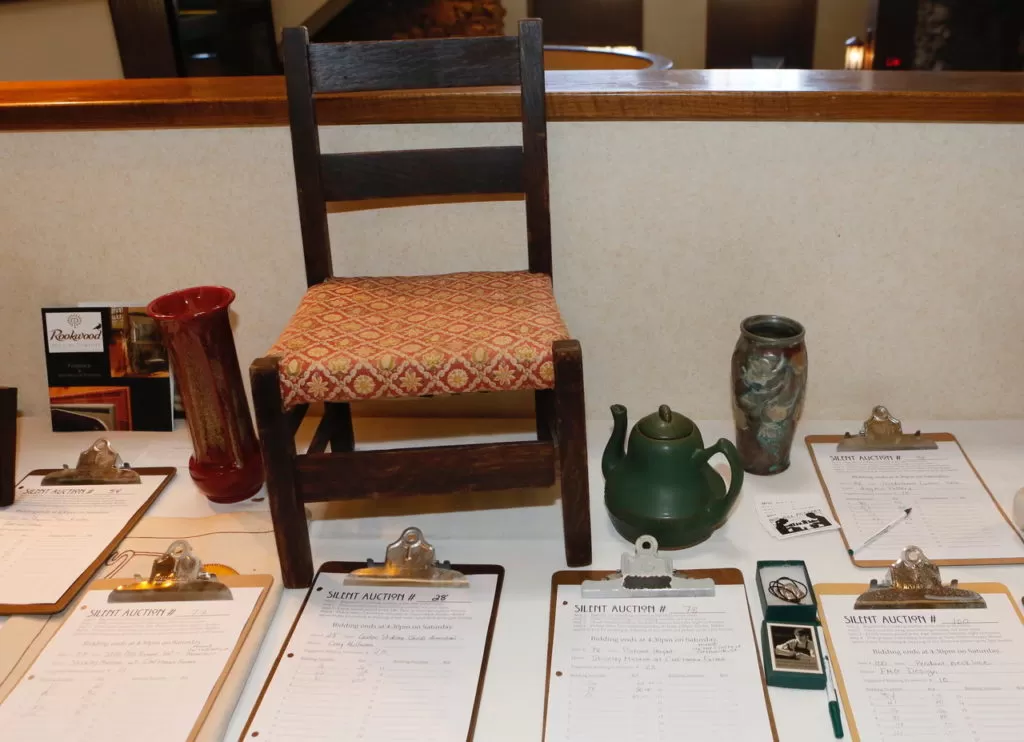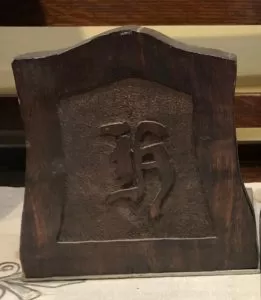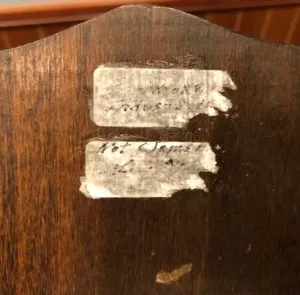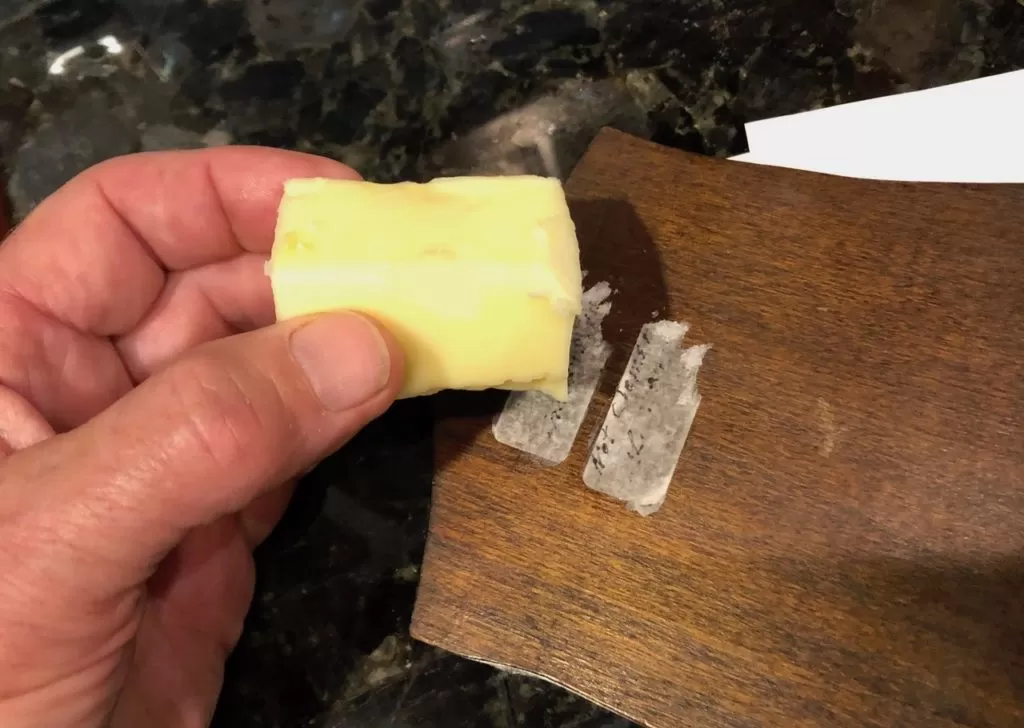A Sticky Problem
One of the problems with growing older is that we sometimes lose track of when we started our various projects. It’s easy for me to remember that this will be the 35th year for the Arts and Crafts Conference at the historic 1913 Grove Park Inn, but I would have to dig in my records to see exactly what year I founded the non-profit Arts and Crafts Research Fund.
Each year the Research Fund has been able to help an average of four individuals pay for travel, photography, and other related costs as they pursue information, often in sites hundreds of miles away, on Arts and Crafts firms and individuals they have a passion for. Their research benefits thousands of other collectors, as we draw upon them as writers, seminar speakers, and discussion leaders to share their discoveries with us.

at the National Arts and Crafts Conference at the Grove Park Inn in Asheville, North Carolina, February 22, 2014. Photo by Ray Stubblebine
And it is the “us” who fund the Research Fund, as our only source of revenue is the silent auction held each year at the Arts and Crafts Conference. This week I have been opening boxes shipped ahead with donations for next week’s silent auction. More often than not these are articles similar to those you and I have tucked away in a drawer, a closet, or the back of a dark bookcase, items we bought years ago, but no longer place center stage atop our Arts and Crafts sideboard.


My friends Scott and Lynn sent over a pair of unsigned Arts and Crafts bookends that may have been carved by a novice woodworker at Biltmore Estate Industries (1905-1917). The young men and women who aspired to become professional woodcarvers had to first learn their craft on monogramed bookends. Only after being juried by designer Eleanor Vance could their work be awarded the Biltmore Estate Industries branded mark.
One of these bookends had years earlier had two gummed identification labels attached to it, labels which refused to peel off easily when I tried removing them. The paper portion lifted away, but left behind a layer of dried adhesive under a thin paper backing. It had been years since I tried it, but I recalled using butter to safely dissolve old adhesive, so I grabbed the bookend and headed into the kitchen.

It only took a few seconds to rub a layer of butter across the labels, then I left them alone while I drank yet another cup of black coffee. Concerned that the oil in the butter might also affect the finish, just ten minutes later I gave it the thumbnail test. I could already see that the butter technique was working, but that a second application would be necessary.
So, I drank another cup of coffee, and this time added a few gingersnap cookies to the formula.
(Had it been a bit later, I might have been timing my experiment with glasses of red wine and pieces of smoked gouda cheese….)
In total, the butter only needed about twenty minutes to soften all of the glue. Rather than using anything which might damage the finish, I restricted my choice of scrapers to my thumbnail.
(Ask any professional restorer and they will tell you that thumbnails and saliva are two of their trusted cleaning solvents and tools.)

With the label and adhesive now removed, I simply wiped off the remaining butter and packed the bookends in a tub headed to the Grove Park Inn next week.
And so, you ask, what’s the cost of this invaluable tip?
Easy.
Just pick out something for the Research Fund’s silent auction, send it to us (or bring it along), and do your part to further our education — and your appreciation — for the Arts and Crafts pieces we enjoy in our homes.
Until next week,
“To get the full value of joy, you must have someone to share it with.” – Mark Twain
Bruce Johnson
25 Upper Brush Creek Road
Fletcher, NC 28732
